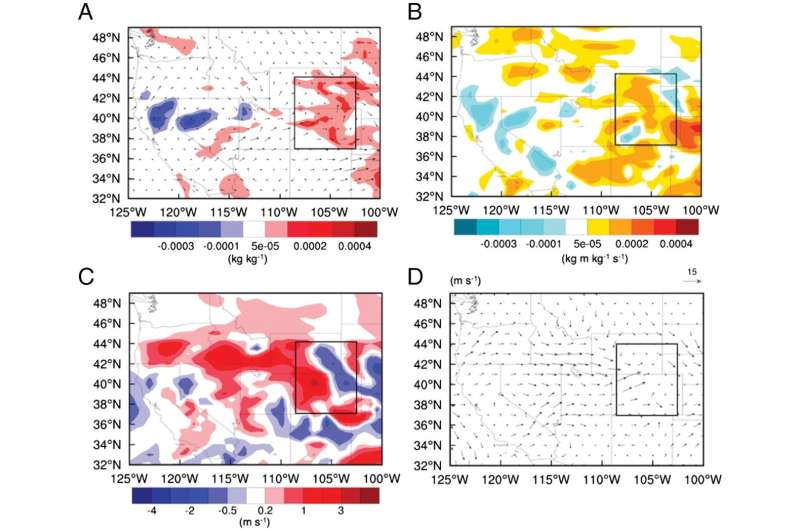October 18, 2022 report
Simulations show major forest fires can increase intensity of distant storms

Bob Yirka
news contributor

A team of researchers with members from the Pacific Northwest National Laboratory, the University of Oklahoma and the California Institute of Technology has found, via simulation, that major forest fires in western parts of the United States can increase the intensity of thunderstorms hundreds or even thousands of miles downwind. The study is published in Proceedings of the National Academy of Sciences.
Prior research has shown that wildfires or forest fires can have a major impact on local weather systems. Heat and soot can lead to the formation of major thunderstorms. In this new effort, the researchers found evidence of a similar phenomenon involving downwind systems far away from the fire.
To learn more about large-scale weather impacts of forest fires, the researchers pored over weather data for the continental U.S. for the years 2010 to 2020. They looked for major storm events that occurred not long after, or during major fires in the west. The researchers found several examples of major storms breaking out after major fires. But they also note that fire season in the west does not coincide with storm season farther east; thus, the impact of the fires on the storms is difficult to associate.
To gain a better understanding of what may occur during and after a major fire, the researchers turned to an established weather model that allowed for adjusting paraments such as heat and smoke to observe the impacts. The simulation showed that big fires can increase the intensity of storm systems hundreds or even thousands of miles away. The researchers also found that they can contribute to creation of larger hailstones.
More specifically, the simulations showed that large fires can increase air flowing across the continent, pushing moist air ahead of it. That can lead to increasing storm strength. The simulations also showed that the soot from a big fire can be carried for long distances, contributing to increases in hail size.
The researchers sum up by suggesting that global warming, which is making western parts of the U.S. both hotter and drier, is likely to lead to bigger and stronger storms across the U.S. due in part to the impact of the increase in forest fires.
Written for you by our author —this article is the result of careful human work. We rely on readers like you to keep independent science journalism alive. If this reporting matters to you, please consider a (especially monthly). You'll get an ad-free account as a thank-you.
More information: Yuwei Zhang et al, Notable impact of wildfires in the western United States on weather hazards in the central United States, Proceedings of the National Academy of Sciences (2022).
Journal information: Proceedings of the National Academy of Sciences
© 2022 Science X Network



















